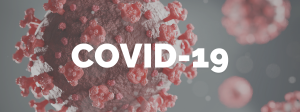Nutrition and Lifestyle Tips to Help Reduce Bloating and Gas
1. Eat mindfully in a calm and relaxed environment
Eating when stressed can hamper digestion and trigger gut symptoms. Consider taking a break from digital devices and practice paying attention to what you’re eating and thoroughly enjoy each bite of food.
2. Chew your food well and eat slowly
The more you chew your food, the smaller the pieces will be when they enter your gut. This makes it easier for your body to break the food down, leading to less fermentation of undigested food in the gut, of which one of the by-products is gas.
3. Space meals and snacks 3-4 hours apart
Constantly eating and snacking prevents the body’s natural cleansing waves, called the migrating motor complex (MMC), from working properly. Your body needs to take a break in between meals to properly digest and process food, and you must be in a fasted state for 60-90 minutes before the MMC can start working. However, if you’re really hungry, please listen to your body and eat!
4. Drink strong peppermint or fennel tea after a meal
Peppermint and fennel are smooth muscle relaxants, meaning that they can help the muscles in your gut relax, which can help reduce gas and abdominal discomfort.
5. Limit carbonated drinks
Beer, kombucha, sodas, and sparkling water introduce more gas into the digestive system. Choose drinks that are not carbonated most often.
6. Limit sugar alcohols and artificial sweeteners
These sugars are poorly absorbed in the gut and can result in excess gas production. Please see the table below for more details.
7. Add flaxseeds and/or oats to your diet
The National Institute for Health and Care Excellence (NICE) in the UK recommends a trial of up to 1 tbsp of flaxseeds (aka linseeds) per day, and/or adding oats or an oat-based cereal to your diet (e.g., granola) for people with irritable bowel syndrome (IBS) to help reduce gas.
8. Rule out lactose intolerance
Lactose is the natural sugar found in animal dairy products, such as regular milk, ice cream, and fresh cheeses. Lactose intolerance can result in gas, bloating, and/or diarrhea shortly after consuming a high lactose food. An easy way to test it out is to avoid foods high in lactose for one week, and then introduce it back into your diet by consuming one cup of milk and monitoring symptoms. Talk to your doctor or registered dietitian if you’re not sure, as there are other factors in high lactose foods that can also trigger symptoms, such as certain milk proteins (e.g., A1 vs A2 milk proteins).
9. Rule out fructose malabsorption
Fructose is the sugar naturally found in some sweeteners, vegetables, and fruits. Eating too much fructose can trigger gas production due to malabsorption. About 1 in 3 individuals have fructose malabsorption, which can result in excess gas production. This can happen if you eat too many fruits in one sitting (e.g., smoothie, 100% fruit juices, or 2-3 bananas in one serving). Spacing out fruit intake by 3-4 hours and enjoying one serving of fruit per meal or snack can help your body better process and digest fructose and prevent symptoms.
10. Rule out sucrose intolerance
Sucrose is a form of sugar, and some people lack the enzyme needed to properly break it down, resulting in malabsorption. This is also called sucrase isomaltase deficiency (SID), which requires a diet low in sucrose. Please see the table for common foods that are high in sucrose.
11. Rule out gluten intolerance or celiac disease
Gluten may trigger bloating in people with non-celiac gluten sensitivity (NCGS) and celiac disease, and it’s important to rule out these two conditions.
12. Limit legumes and gas-producing vegetables
Your body naturally ferments these foods and bacteria break them down in the large intestine (colon), which results in the by-product of gas. It may be helpful to enjoy smaller portions (e.g., ½ vs 1 cup of daal), and/or to enjoy these foods on alternating days instead of consecutive days.
13. Use kombu to cook legumes and gas-producing vegetables
Kombu is a seaweed that contains natural digestive enzymes. You can cook with it to help break down sugars that can trigger excess gas production.
14. Try a short-term low FODMAP diet if you have IBS or IBS-like symptoms
The low FODMAP (fermentable oligosaccharides, disaccharides, monosaccharides, and polyols) diet is low in rapidly fermented sugars that may trigger excessive gas production. Research shows it is most effective in reducing gas in people with IBS.
15. Treat constipation
Constipation-induced bloating is common. Having regular bowel movements is key to helping move gas out of your body. Treat constipation through various strategies, such as eating a high fibre diet, staying well hydrated, being active, and/or taking a fibre supplement (e.g., 100% psyllium husk fibre).
16. Engage in regular physical activity
Staying active helps move gas through your body. Find something that you enjoy doing and consult with your physician or kinesiologist to discuss a physical activity level that is right for you.
17. Avoid ingesting extra air
Chewing gum, sucking on candies, drinking through a straw, smoking, and eating with your mouth open or while talking, are all activities that cause you to suck in more air.
18. Consider a daily probiotic for one month
A daily probiotic might help, but there is not enough research and evidence at this time to know exactly which strain and which dose would be beneficial, and the underlying cause of excessive gas is important to figure out. Please note that it is very normal to have some bloating the first few days of trying a new probiotic as your body adjusts and adapts to a higher dose of new bacteria. Check out probioticchart.ca for a list of evidence-based probiotics in Canada.
19. Consider taking digestive enzymes with meals
Talk to your doctor, pharmacist, and/or dietitian to learn more and to ask if digestive enzymes might be a good option for you.
20. Speak with your doctor and/or registered dietitian
It’s important to rule out the underlying cause of excessive gas production. This makes it much easier to target through specific medical, nutrition, and lifestyle therapies and treatments.
Foods that may contribute to increased intestinal gas
| Lactose | milk, ice cream, and fresh cheeses (ricotta, cottage cheese, etc.) |
| Fructose (excess) | agave, honey, high fructose corn syrup (glucose-fructose), and larger portions of fruit in one sitting (smoothie, 100% fruit juice, >1 serving of fruit at a time) |
| Sucrose | white sugar, brown sugar, icing sugar, candies, syrups, and high sucrose fruits (apple, cantaloupe, pineapple, etc.) |
| Gluten | gluten-containing grains such as wheat, rye, and barley |
| High FODMAP Foods | fructans (wheat, onion, garlic, etc.), galactans (beans, green peas), lactose, excess fructose, and polyols (sugar alcohols) |
| Vegetables | asparagus, broccoli, brussels sprouts, cabbage, cauliflower, celery, garlic, kohlrabi, onions, leeks, radishes, rutabaga, and turnips |
| Legumes | lentils, chickpeas, kidney beans, black beans, black eyed peas, etc. |
| Sugar Alcohols | erythritol, sorbitol, mannitol, maltitol, and xylitol
found in sugar-free gums, candies, mints, and diabetic, diet, and keto foods, as well as naturally in some fruits and vegetables (prunes, cauliflower, and button mushrooms) |
| Artificial Sweeteners | acesulfame-K, aspartame, saccharin, sucralose |
| Fried Foods | French fries, tempura, deep-fried chicken, vegetable pakora, etc. |
| Carbonated Drinks | beer, kombucha, sodas, sparkling water |
















